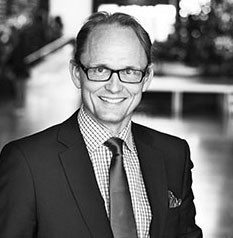The Adjacent Possible in Humanistic Thinking
In view of the awe-inspiring advances in science and technology the humanities need to rejuvenate itself to drive new insight and meaning into our human existence and contribution to the world. The metaphor of “adjacent possible” can be used to describe how societal transformation occur as incremental steps into new rooms that slowly lead us from our current trajectory into an adjacent one where new possibilities await. If humanists took the notion of adjacent possible into their thinking, a vast new neural network of thought exchanges, one combining with another, and another, will emerge. The result is likely to spark new energy and life into humanistic thinking and, hopefully, answers to big questions about the future of our shared civilization and planet.

In this technological world, where digits carry more weight than words, algorithms are valued more highly than poetry, and innovation comes from new machines rather than new thoughts, how can the humanities expand itself, enlarge its stature beyond life-size, to recapture respect and meaning among people?
The humanities should learn from the sciences in understanding that it must constantly reinvent itself and not stand still on its past laurels. Science has always recognized that it must again and again question what has been accepted as true, always seeking new horizons of discovery, innovation, and paradigm change.
The humanities today seem to be asleep. It’s like they’ve given up, defeated by the brainpower (and money) pouring into the sciences. Humanities education is fading, taking a back seat to the “real drivers” of progress and wealth – computer technologies, biosciences, physics, and, yes, even app development. In business schools, the next generation of leaders is seldom taught philosophy, ethics, literature, art, or critical thinking – the subjects that unquestionably feed the development of wisdom and a sense of humanity’s ultimate meaning in life. The innovative freshman courses on complex problem and enduring questions offered by the Carroll School of Management, Boston College, should serve as a role model for other business schools. Globalization, war and deontology (the rightness or wrongness of actions themselves) exemplifies the breath of the themes freshmen need to ponder.
I contend that the humanities can become great again, that we can create a renaissance of new thought and energy, that we can drive new insight and meaning into human existence and hold sway in the world. I have written two other articles on this topic, in which I suggest that the humanities can learn from the sciences, using inspiration from laws and principles that drive science forward today. I wrote about how Moore’s Law—the notion that the number of transistors on a chip can double every two years—is equally a metaphor for how the humanities might think of itself as needing to double new thinking every few years. I proposed in another article that we return to Aristotle’s concept of “Practical Wisdom” as the necessary corollary to the emphasis we have placed on STEM education. Without teaching the humanities and the arts (broadly defined) to scientists, business executives, and political leaders, we risk creating a world where technology, robotics, and artificial intelligence advance beyond our own capacities to think and reason.
There is a concept from evolutionary biology that I find to be another apt metaphor for how the humanities can get moving again. This is the notion of the “adjacent possible” – a descriptive theory proposed by scientist Stuart Kauffman for how complex systems have evolved and adapted. In the primordial soup of the universe, all the basic molecules were capable of combining in any which way, shape, or form. Kauffman’s theory posits that evolution could occur only by performing various combinations of those basic molecules—and some of them then led to another combination. Kauffman compared evolution to walking into one-room house, but there are doors on all the walls. The moment you open one of those doors, another room that was not there before magically appears, and when you step into that, doors also magically appear on its walls, leading to another combinatory choice that did not exist before. With each combination, the boundaries of the one room expand, and soon, a palace has been built that was never envisioned. Complex systems of life were built in this way, without a grand game plan—they happened by stepping into the “adjacent possible” one molecule, one cell, or one thought at a time, again and again.
I look at the adjacent possible as a metaphor for the untapped potential of the humanities today. In the same magical combinatory way, I see the “soft” humanities side of societal transformation as not happening in one gigantic leap towards a specific, pre-chosen direction, but rather in very small steps into new rooms that slowly lead us from our current trajectory into an adjacent one where new possibilities await. If humanists throughout the world adopt this principle of the adjacent possible into their thinking, we would soon see a vast new neural network of thought exchanges, one combining with another, and another, with some of them forming successful new movements that spark new energy and possibly birth new life into humanistic thinking.
As we settle into this 21st century, where the advances in technology and science are happening and will continue to occur rapid-fire, enabling humans to work with amazing new tools, to have conveniences we never imagined, to facilitate our travel and communications in ways that can connect every single being on earth to every other one, it cannot be that the humanities disappear. We cannot leave the humanities out of our educational systems, out of how we train our business and political leaders, out of how we teach our citizens to think and appreciate life. The adjacent possible of the future cannot be just more apps, more machines, and more toys that entertain us. This complex system we live in, called humanity, evolved by stepping into the adjacent possible—and there are still doors to open and combinations to discover in philosophy, literature, art, and all the fields that make us truly human.
Detta är en bloggtext. Det är skribenten som står för åsikterna som förs fram i texten, inte Jönköping University.





